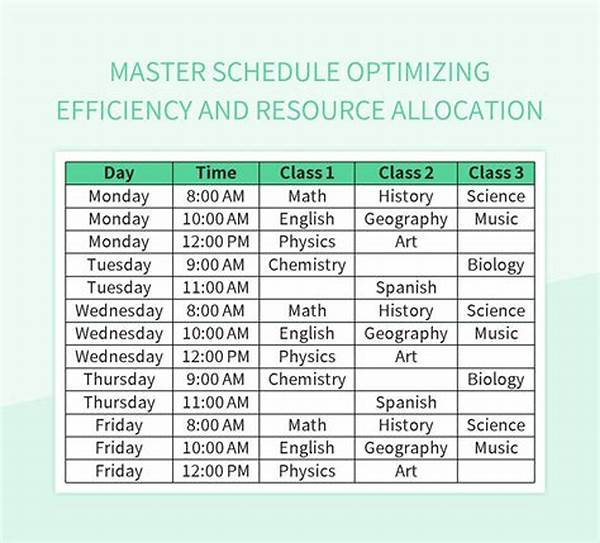In today’s fast-paced world, where being organized is revered as a superpower, many struggle to keep up with the chaos of daily life. Imagine a world where you don’t need a teleportation device to be in two places at once or an extra pair of hands to manage multiple tasks simultaneously. While cloning yourself still isn’t an option, a well-crafted weekly plan might just be the next best thing! Weekly planning is all about strategizing, prioritizing, and managing your time effectively. It’s like having a trusty guide through the wilderness of your work week. Did you know that people who plan their weeks in advance are 33% more productive than those who don’t? Amazing, isn’t it?
Read More : Breaking Down Parkinson’s Law In Modern Work
Now, you might be asking, how to master weekly planning for better results? The answer lies in a blend of both art and science—art in tailoring the plan to fit your unique lifestyle and challenges, and science in applying tested techniques to ensure efficiency and effectiveness. Picture this: standing at the summit of your week, overlooking the challenges below with the satisfaction of knowing that every task is mapped out. The allure of mastering weekly planning is not just in getting things done, but in achieving a harmonious work-life balance, saving time, and reducing stress. This could indeed transform chaotic Mondays into manageable beginnings and stressful Thursdays into contemplative pre-weekend planning sessions.
————
Steps to Perfect Your Weekly Planning
Crafting a weekly plan is akin to painting a masterpiece; it requires a canvas of days waiting to be filled with colors of tasks and priorities with vibrant strokes of meticulous strategy. Here’s a step-by-step guide on how to master weekly planning for better results:
First, start with a reflection on what you need to achieve. This involves setting aside time each week to reflect on your goals and progress. It is important to know which tasks deserve priority and which ones can wait. Managing tasks this way can increase productivity by 21%, according to recent research.
Next, choose your tools wisely! Be it digital apps or good old pen and paper, select tools that resonate with you. Consistency in using these tools is key, as it reinforces habits and ensures you remain on track with your plan.
Once you have your tools, list out tasks and categorize them by urgency and importance. The time management matrix can be a handy tool here. This helps in visualizing tasks, and soon enough, prioritizing becomes second nature.
Lastly, remember the significance of breaks and leisure in your schedule. Allocating time for breaks increases productivity and creativity. According to experts, consistent short breaks can increase work performance by up to 15%.
————
The Art of Prioritization and Flexibility
As we delve deeper into the art of planning, it’s crucial to emphasize the dynamic nature of life. Flexibility should be an integral part of your weekly planning. Delight in having a structural blueprint, but understand the need to alter these plans when unpredicted events occur. This flexibility can save your ship from sinking amidst unforeseen circumstances ensuring you still accomplish most, if not all, of your goals. Through understanding, discipline, and by knowing how to master weekly planning for better results, you guarantee yourself a productive and less stressful journey.
————
Discussions on Mastering Weekly Planning
The mastery of weekly planning can be likened to the crafting of a tailor-made suit; not only should it fit you perfectly, but it should also evolve with your changing style and needs. In this discussion, we delve into the nuances of how to master weekly planning for better results, bringing your weekly schedule into sharper focus and making the chaos of daily life a thing of the past.
The first step is embracing the philosophy of effective goal setting. Goal setting is akin to packing a suitcase for a journey; you must prioritize essentials over frivolous items. The clearer your goals are, the easier it becomes to figure out what your week needs to achieve. Imagine gearing up for an exciting adventure with destinations clearly mapped out. With clear goals, your journey through the week becomes less daunting and more exhilarating!
Next is to understand the importance of timing and deadlines. Timing is everything, and this applies just as much in weekly planning as it does in landing the perfect punchline. When you create a timeline for your tasks, you are not only organizing your responsibilities but also preventing the overloaded dread of last-minute rushes. Let’s face it, nobody enjoys burning the midnight oil and waking up with a “deadline hangover.”
Crafting accountability can further elevate your planning prowess. Whether it’s having a planning buddy or using apps that remind you of your progress, accountability provides a gentle yet effective nudge towards achieving your goals. It’s like having your mentor gently nag you about your progress (only more charming and less irritating).
Moreover, don’t overlook the transformative power of retrospection. Reviewing and analyzing your past plans can shed light on what worked and what didn’t, enabling you to fine-tune your strategies. Think of it as reviewing your gameplay after a challenging match, understanding your weak spots, and preparing a better strategy for the next round.
Lastly, visualization can be a potent tool in consolidating your weekly strategy. Whether it’s a vibrant vision board or a digital planner filled with color-coded tasks, visualization can help in mentally preparing for the week ahead and ensuring no detail is overlooked. Learning how to master weekly planning for better results requires this level of intricate planning and execution.
———–
The Importance of Adapting to Unforeseen Changes
Life is filled with unpredictability, and mastering the art of weekly planning involves preparing for unforeseen detours. When unexpected challenges upend your plans, instead of resorting to panic, adaptability allows you to maintain momentum and integrity in your schedule. It’s all about pivoting gracefully like a ballerina on stage, not allowing one misstep to deter the entire performance.
Flexibility in your plan empowers you to face challenges head-on without sacrificing progress or quality. With the right approach, even a spontaneous twist in your schedule can become a source of creative inspiration, driving you to find new, innovative solutions to problems. Learn to turn roadblocks into stepping stones by making adaptation second nature in your weekly planning regime.
———–
The perfect weekly plan is often built with various techniques that align with individual needs and lifestyles. Below are examples of these techniques to kickstart your journey to mastering weekly planning:
———-
The Goals of Weekly Planning
Weekly planning is not just about filling every hour with tasks; rather, it’s about creating a framework that embodies your life goals, desires, and responsibilities. The primary aim is to facilitate a work-life balance that promotes overall well-being, enhances productivity, and empowers individuals to take charge of their time effectively.
By mastering these techniques, you allow yourself to be proactive rather than reactive, ensuring that you approach each day with clarity and confidence. Ultimately, the goal is to transform a seemingly endless list of tasks into manageable, bite-sized actions that lead you towards achieving both short-term and long-term objectives. Once you define your desired outcomes and practice how to master weekly planning for better results, you pave the way for a more organized, efficient, and fulfilling life.
In conclusion, the art of weekly planning is as much about personal growth as it is about productivity. By adopting these techniques, you’re not just managing tasks; you’re investing in a personal approach to mastering your week, leading to better results both personally and professionally.



